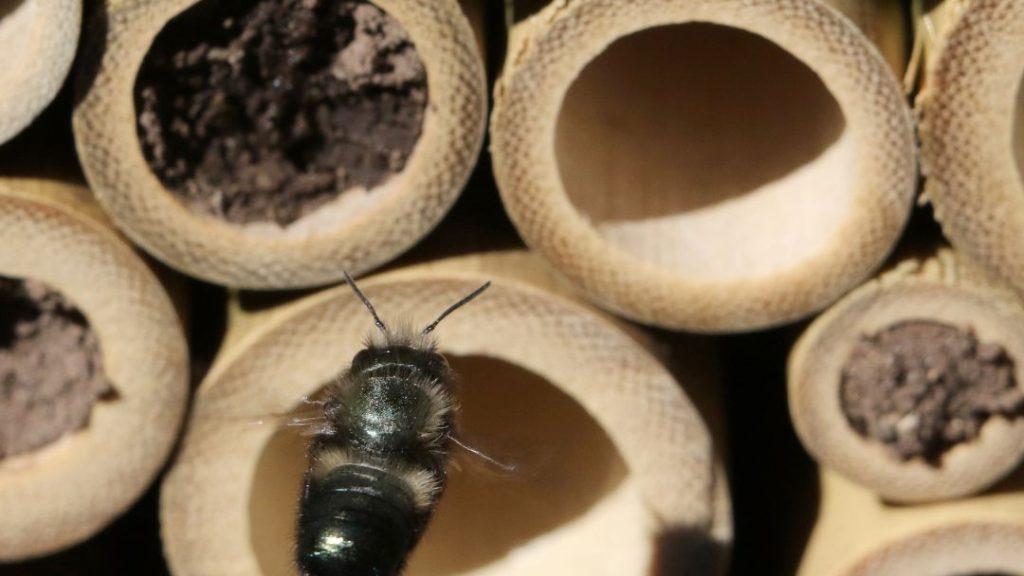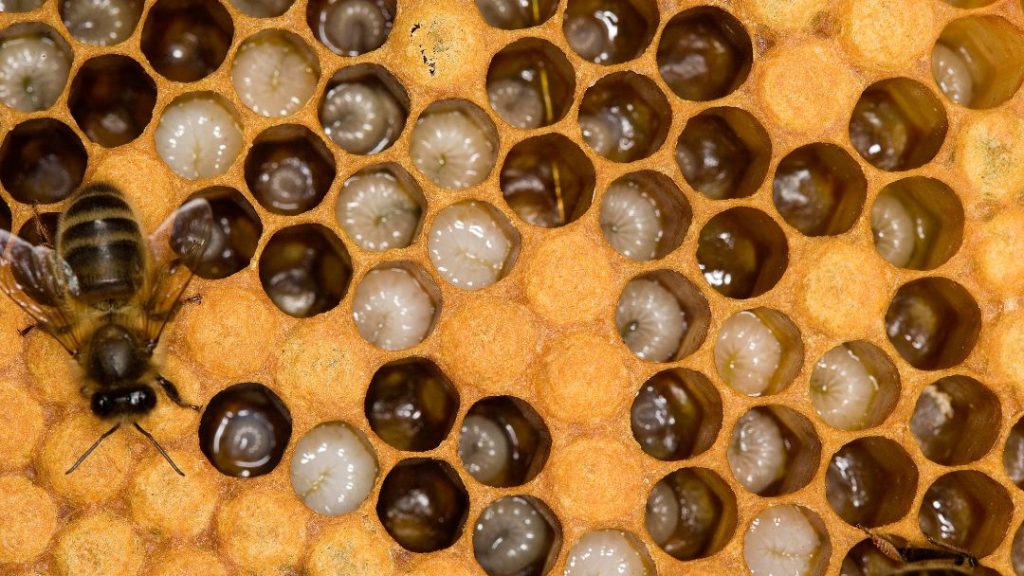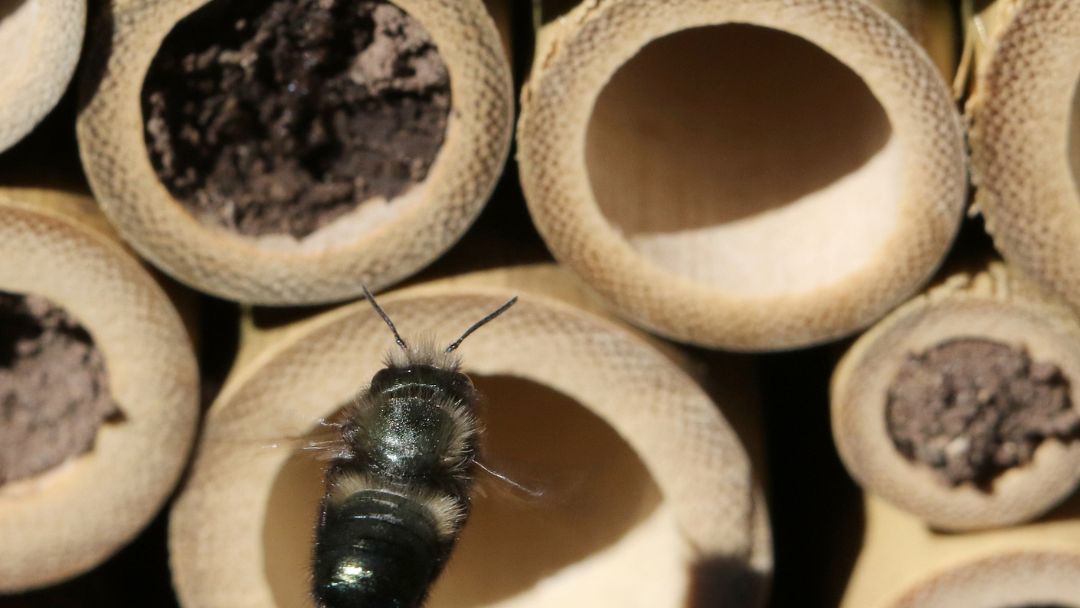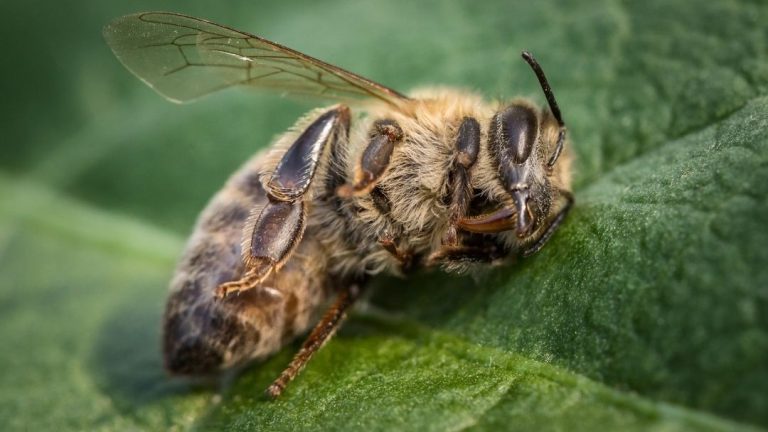How Long Do Masonry Bees Nest For?
Masonry bees’ nests are usually for one year, from the current spring to the following spring, till the mason bees emerge. Once the adult bees come out from the cocoons, they will nest their house of their own in their preferred location.
However, newly formed adult bees may use the old house if there is no convenient location nearby and the current nest has clean holes or cavities. If you want to learn more about the topic of “How long do masonry bees nest for?” don’t miss out on this blog post.
How Long Do Masonry Bees Nest For?
Masonry bees prefer a fresh nest in every new season. Generally, these solitary bees stay in a nest from the current spring till the following spring.
Once they emerge, you need to change their nesting tubes, reeds, or blocks. The good news is that you don’t need to replace the entire masonry bee nest.
Adding new nesting tubes, reeds, or blocks will do the job. But of course, you want to clean the nesting area thoroughly once all the masonry bees emerge.
Simply put, the duration of a masonry bee hotel starts when the adult bee lays eggs and ends once they emerge.

How Long Mason Bees Take To Grow From Eggs To Fully Adult?
Mason bees generally take one year to grow from eggs to fully formed adult bees.
However, some solitary bees may take as long as two years to mature. They are usually in their larvae stage for one year.
A masonry bee goes through five stages in its life to grow from eggs to a fully formed adult me.
Life Stage 01 – Eggs
Mason bees start laying eggs in the late spring. Their eggs look like miniature rice grains. The color and shape look similar, too.
Female mason bees lay up to 30 eggs in their lifetime. These non-colonizing solitary bees generally lay 1-2 eggs daily.
Life Stage 02 – Larvae
It takes around 1-2 weeks (generally 10 days) to hatch eggs and transform into larvae.
A mason bee larvae will face five growth stages or phases. It will gain energy and nourishment by consuming pollen loaf.
The larvae will gradually grow by shedding their exoskeleton or molt. This hard outer shell protects their body and protects a perfect body structure.
As masonry eat and grow, the bees will construct silken cocoon in their cells to strengthen the wax cells in which they pupate.

Life Stage 03 – Prepupal Dormant
The cocooned larvae of mason bees go through the prepupal dormant stage during the early summer. Its duration ranges from one to three months.
Bee raisers often call it a period of low metabolic activity. During dormancy, metabolic rates drop, and the bees do not feed or engage in active behaviors.
This life stage duration generally depends on the surrounding air temperature and the group of masonry bees that is naturally found or originates from.
According to most experts, 19–22°C is the best temperature for prepupal development and 19–26°C for pupal development.
Life Stage 04 – Pupal
Mason bees enter into the pupal stage from the prepupal dormant stage during the mid-summer or early fall.
The underdeveloped mason bees shed their exoskeleton and achieve a white pupa inside the cocoon.
It looks like a fully developed mason bee but has a white color. The pupa undergoes a gradual change for the next 30 days. It sheds its exoskeleton again and slowly develops adult skin.
Their wings, eyes, legs, and body hair will start to take a more recognizable adult bee form.
Life Stage 05 – Adult
Once the pupae are fully developed, the adult bee will emerge from the cocoon. Their emergence period is generally in the early spring season.
Male mason bees may emerge earlier, followed by the female ones in the next week. These solitary bees generally prefer 55°F or 13°C consistent temperature to emerge.
The temperature is still cold, but flower plants begin to bloom. Mason bees will spend the few following weeks to mate and build nests. They will also collect food (nectar) from flowers.
Once female bees emerge, they will live for about 1 month. They are mainly active for 6-8 weeks. Hence, their pollination period is shorter too.
Can You Relocate A Mason Bee House?
Yes, you can relocate a mason bee house. But, ensuring optimal safety is a must.
If you want to move a mason bee house where wild bees live, don’t remove individual-filled nesting materials. You can only get off them when there is any sign of predators.
In fact, it is best to relocate all the nesting materials along with the house. Make sure to move the Mason Bee Hotel gently with minimal jostling.
Experts generally recommend relocating a mason bee house to a protected location if it is too big. Birds and bugs may use the nest and try to harm mason bees.
Do Masonry Bees Return To Old House?
Yes, masonry bees may return to their old house. But you must immediately change the reeds or nesting tubes once they emerge.
These new, fully developed bees will look for spacious and convenient holes or cavities in wood or masonry to build their nesting sites.
If you place fresh tubes or reeds inside the house, they may reuse the old house. Of course, you need to clean and disinfect the nest to attract mason bees.
It is best to shift the mason bee house location a few feet away from the older spot. These non-colonizing solitary bees will take the house as a new one.
How To Attract Mason Bees To A House?
You can encourage mason bees to nest in a particular area by providing suitable nesting sites and food sources.
Growing mason bee-friendly plants in your garden or outdoor space is another effective technique to attract mason bees.
Plant pollinator-friendly plants. You can choose spring bloomers and native plants combined.
Placing a mud source nearby is also essential. Mason bees prefer rich and wet soil to build a wall that seals off the egg.
Creating a hospitable environment can naturally attract mason bees to nest in the desired location.
How Many Mason Bees In A Nest?
It depends on how many acres of garden you have. The more space you have, the more mason bees can live in a nest.
Of course, you want to consider the accommodation space inside the mason bee house.
For example, an acre of land with a good number of fruit trees is perfect for 250 female mason bees. It is a good rule of thumb to keep 10 mason bees per fruit tree.
Each female mason bee requires at least two nesting tubes, reeds, or holes. The more tubes or reeds you add, the more mason bees can accommodate.
For instance, a mason bee house with 120 tubes can accommodate around 60 adult female bees and 90-120 male bees.
How Do Mason Bees Survive The Winter?
Like other bees, mason bees are cold-blooded. But they can’t withstand prolonged sub-freezing weather.
These non-colonizing solitary bees stay inside the cocoon during the whole winter season. Their cocoons are waterproof to some extent. They can withstand up to 30 minutes of soaking.
The optimal temperature for these cocoons is 34°-38° F (1°-3°C).
These tiny bees do not eat, drink, or move inside the cocoon to conserve resources and withstand the winter without needing to forage.
Mason bees usually choose holes, reeds, or cavities in wood, which offer some insulation from cold and moisture.
Do Masonry Bees Leave On Their Own?
Unlike honey bees and other social bees, masonry bees leave their nest or house on their own.
These non-colonizing solitary bees don’t have any colonies or hives. They build their nest inside the reeds, holes, or tubes.
Mason bees will lay eggs inside the tubes, add pollen and nectar as a food source, and finally seal it with mud or other materials.
Generally, solitary bees keep coming to the nest as long as they lay eggs. A female mason bee lays up to 30 eggs in her lifetime.
Once she stops laying eggs, her nesting work is complete. She will leave the house independently as part of their natural life cycle and won’t return.
The next generation of masonry bees will emerge from the nests on their own when they reach maturity.
Are Mason Bees Good To Have Around?
If you want to increase your garden and fruit tree yields as well as maintain an optimal local ecosystem, mason bees are good to have around the garden.
These non-colonizing solitary bees are excellent pollinators. When it comes to pollinating, mason bees are 120 times better pollinators than honey bees or bumble bees.
They have more hair on their body to collect ‘pollen’ through the splashing technique.
Two or three female bees are enough to pollinate a mature apple tree. These proficient pollinators are good to have around to help the environment and support the surrounding habitat.
Do Mason Bees Live In The Ground?
Unlike some other solitary bees, mason bees don’t live in the ground. They prefer above-ground spaces or off-the-ground locations for nesting.
These gentle and hardworking bees are known as cavity dwellers because they form nests, lay eggs, and take care of tiny bees inside sheltered chambers or cavities.
They usually look for trees or stumps where there are pre-drilled holes. Masonry bees may create their nesting inside plant stems with a hollow space inside or any old beetle burrows.
These non-colonizing solitary bees prefer a reliable location nearby (within 25 sq. ft.) to form a nesting area.
The height should be around 5-7 feet off the ground to protect themselves from moisture, insects, and other predators.
Where Do Mason Bees Nest In The Wild?
Masonry bees usually prefer hollow stems of plants or tunnels in the wild. They provide natural, tubular, and ready-made cavities.
This nesting location offers excellent protection from predators and environmental factors. Plus, solitary bees will get decent insulation to regulate temperature and humidity within the nest.
Besides, these hardworking bees may use holes formed by wood-boring insects as they nest.
Bees can significantly benefit from these natural resources as they optimize their nesting success and ensure the well-being of their offspring.
Final Words
Mason bees need a safe location to lay eggs, store food for their larvae, and take care of them until they emerge. These non-colonizing solitary bees may use natural sources or man-made houses.
Of course, they will consider the height, safety, nearby plants, surrounding environment, and predators before choosing a location.
These non-social bees use their house for a single season. Female bees stay inside the nest for 10-11 months and lay eggs in a new home for 4-6 weeks, which is fresh and clean.
Hopefully, you got a clear idea about the question, “How long do masonry bees nest for?” If you have still any queries, feel free to ask me in the comment section.



